Growing up in a small northwestern Pennsylvania town, I always assumed that while our local history was important to us – it didn’t always carry the same import to the world beyond. As so often happens, I was wrong and, in this case, willingly so. In graduate school, I was fortunate enough to work on a local archaeological site with national, even international implications on our understanding of a shared history.
In 1848, Dr. Charles Everett, neighbor, physician, and contemporary to Presidents Thomas Jefferson and James Monroe, manumitted the slaves residing on his Virginia plantation upon his death. For five years, the freed African Americans worked, saving money and buying the freedom of their loved ones. During this time, Dr. Everett’s surviving nephew, a Philadelphia-educated physician with abolitionist connections, Dr. C.D. Everett, began working with northern abolitionists to establish a settlement for the freedmen, freedwomen, and their children.
On November 12, 1854, 63 African Americans arrived in Mercer County, Pennsylvania, and Pandenarium, the new settlement’s name, became a community, in a very real sense. Almost immediately, nonessential housing was erected along the small stream, Indian Run, despite accounts reporting that 24 houses, their associated wells and graded roadways were awaiting the incoming inhabitants upon their arrival (Weidhmann 1973; Woge 1980; Woods 1999). The additional houses would later be described as “shacks” situated on the banks of Indian Run and were flooded that fall. Following the flooding of their new homes, the settlement’s residents moved into the houses that had been built by the abolitionists prior to their arrival.
Over the years, the men, women, and children living at Pandenarium continued to alter the landscape from its original form, renegotiating their world and their place in it. Why would African American inhabitants of Pandenarium re-organize their new community? In my thesis, I argued that the community’s spatial layout and its changes over the years and generations speak of a collaborative effort on the part of southern planters, northern abolitionists, and newly freed African American families (Jaillet 2011). The community’s initial layout appears to have been a combination of a rural northwestern Pennsylvania village template and a Chesapeake plantation template (Hopkins 1873; Jaillet 2011).
The similarities to a Chesapeake plantation, reminiscent of a life the former slaves were leaving behind, may be one explanation of why the inhabitants set to work redefining their space almost immediately and continuing to push the settlement’s spatial boundaries in subsequent generations (Jaillet 2011; The Globe 1980).
Archaeological excavation of the multi-generational Allen family residences at Pandenarium helped to reveal a past that had largely been forgotten by the present community. John and Rosie Allen were two of the settlement’s original adult inhabitants, living upslope of the stream in the row of previously built houses circa 1854 (Hopkins 1873; Jaillet 2011). A number of personal artifacts were recovered from the John and Rosie Allen’s residence to include a steel nib pen, possibly used by one of the Allens’ children attending the local school, as 1880 census data indicates the elder Allens were illiterate (Jaillet 2011). One child, Bob Allen, born at Pandenarium, would build a house at the northeastern corner of the settlement, near Indian Run, circa 1880s (Jaillet 2011). According to the 1880 census, Bob Allen lived in this house with his European American wife, Lizzie, and their four biracial children, Joseph, Samuel, William, and Rettie. A graphite pencil fragment and a fragmentary children’s teacup were two of
the numerous artifacts recovered from the site (Jaillet 2011). While it is a small glimpse into the lives of the multiple generations of Allens that lived at Pandenarium, the archaeological record is singular in its ability to flesh out the history of those that
actually lived at Pandenarium. The space along the banks of Indian Run became a place with cultural value imbued upon its muddy waters by the multiple generations of African American residents at Pandenarium.
Living within a previously structured environment, the freed slave population and their descendants lived on the site for nearly forty years. By the end of the nineteenth century, many individuals had moved to nearby urban communities abandoning their houses and agricultural plots. With the movement of individuals out of the settlement, the individuals remaining at the site renegotiated their physical environment by redefining the layout of agricultural lands and domestic structures. Several maps from the late nineteenth century and early twentieth century depict houses with associated names, each of which can be linked to manumitted slaves that were listed in the elder Everett‟s probate records. The ways in which the individuals negotiated their cultural environment speaks to the agency of the inhabitants of Pandenarium. The ways in which they redefined the physical and social boundaries of the site over time remain largely undetermined. The historical records lack clarity; a clarity that archaeological investigation can provide the site by exploring the spatial boundaries and the social implications of these boundaries.
If you would like to learn more about Pandenarium, a digital copy of Angie’s thesis is available for viewing at the PA HPO office.
References Cited
Jaillet, Angela S.
2011 The People of Pandenarium: The Living Landscape of a Freed African American Settlement. Published Thesis. Indiana University of Pennsylvania.
Hopkins, G.M.
1873 Atlas of Mercer County, Pennsylvania. Philadelphia.
The Globe
1980 Indian Run about 1900. Reprinted. New Wilmington, PA.
Weidhmann, W. Edward
1973 Indian Run History. Compiled by Educator. The New Wilmington Globe. August 23.
Woge, Mairy J.
1980 The History of Indian Run. The New Wilmington Globe. May 28.
Woods, Ruth Z.
2010 Personal Communication with Author. Mercer County, PA.
1999 History of East Lackawannock Township, Mercer County Pennsylvania 1900-2000. Supervisors of East Lackawannock Township, Mercer County, Pennsylvania.
Angela S. Jaillet-Wentling, M.A., RPA
A graduate of Pennsylvania State University (BA – Anthropology, 2008) and Indiana University of Pennsylvania (MA – Applied Archaeology, 2011), Angie currently works for GAI Consultants, Inc. in Pittsburgh, PA as a senior archaeologist. A new mother, she is learning to balance her role as an NCO in the U.S. Army and her hobbies of outdoor activities and art.
Comment Policy
PHMC welcomes and encourages topic-related comments on this blog. PHMC reserves the right to remove comments that in PHMC’s discretion do not follow participation guidelines.
Commenters and Comments shall be related to the blog post topic and respectful of others who use this site.
Commenters and Comments shall not: use language that is offensive, inflammatory or provocative (this includes, but is not limited to, using profanity, obscene, or vulgar comments); disparage other commenters or people; condone illegal activity; identify the location of known or suspected archeological sites; post personal information in comments such as addresses, phone numbers, e-mail addresses or other contact details, which may relate to you or other individuals; impersonate or falsely claim to represent a person or an organization; make any commercial endorsement or promotion of any product, service or publication.
If you would like to comment on other topics not related to this blog post but related to PHMC, please fill out the PHMC Contact Us Form.
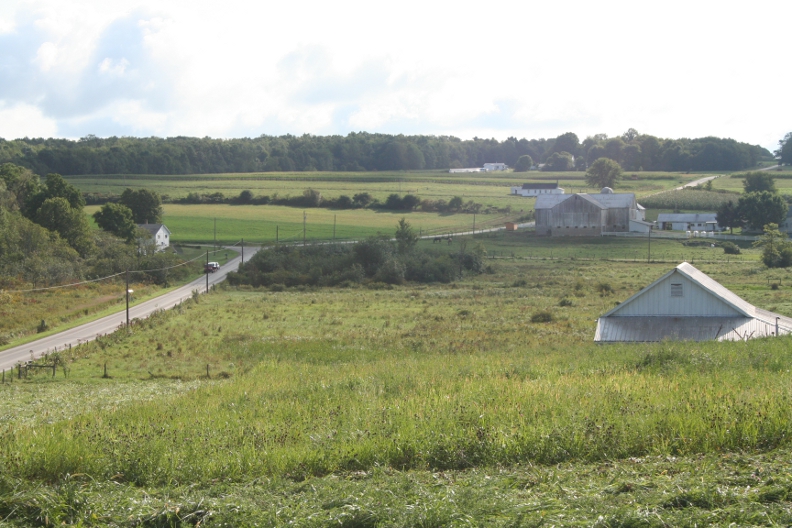
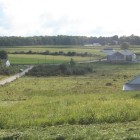
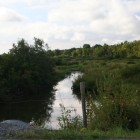
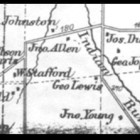
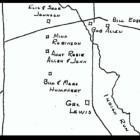
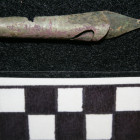
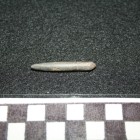
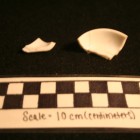
Having grown up in New Wilmington, I am delighted to come upon this post. My father-in-law, Delber McKee, who had been on the History faculty of Westminster College, took me to the Mercer County Historical Society to introduce me to the documents there on Pandenarium. You undoubtedly know them all. My grandfather, Vic Minteer, grew up on a farm not far from Indian Run, and I was often on the Leesburg Station Road as a boy, riding my bike with friends past the White Chapel Cemetery, where, I later discovered, George Lewis is buried. I’d be very glad to learn of any new work you are doing on this remarkable community.
I grew up in the 1970’s in a 3 story farm house on Indian Run Farm. I recently discovered this history and am wondering why I’m just learning this now. I have always found that place interesting and fun to explore as a child and still to this day it has my heart. I would deeply love to revisit and reminisce. If anyone knows of who owns this property now or how I could get in contact with them to gain permission to to just walk about there I would appreciate it.